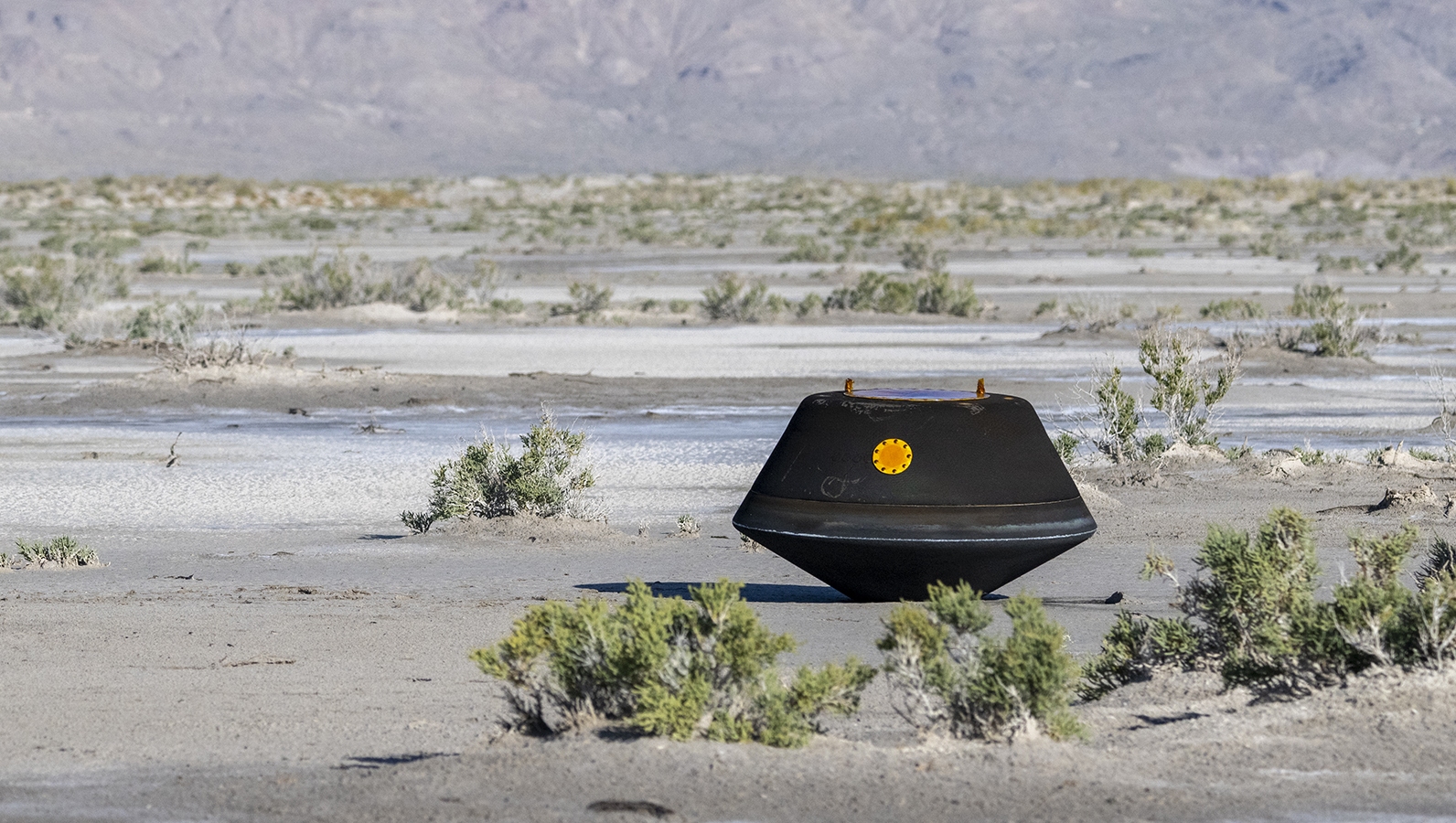
Stay Up to Date
Submit your email address to receive the latest industry and Aerospace America news.

The Atmospheric Flight Mechanics Technical Committee addresses the aerodynamic performance, trajectories and attitude dynamics of aircraft, spacecraft, boosters and entry vehicles.
Engineers this year analyzed performance data from last year’s Artemis I mission, in which an unoccupied NASA Orion capsule traveled around the moon and splashed down in the Pacific Ocean. The analysis was done to validate models and prepare for future Artemis missions, including the Artemis II crewed lunar flyby scheduled for November 2024.
In September, NASA’s OSIRIS-REx spacecraft, built by Lockheed Martin, returned samples from the asteroid Bennu to Earth, making the U.S. the second nation to retrieve asteroid samples. The sample return capsule, landed in Utah using a reentry sequence like that of previous missions, including the Japanese Hayabusa missions in 2010 and 2020. Built by Lo NASA’s first Earth-return mission since the 2006 Stardust mission.
In November, SpaceX launched its second Starship-Super Heavy rocket from Boca Chica, Texas. The booster and upper stage separated as planned, but shortly after, Super Heavy exploded over the Gulf of Mexico and Starship was lost. During the first attempt, in April, a fully stacked Starship-Super Heavy lifted off and flew under control for 85 seconds before losing thrust vector control and exploding over the Gulf of Mexico. Before the November flight, SpaceX redesigned its launch platform by adding a water deluge system.
Several notable first flights occurred this year. The Boeing-Saab T-7 Red Hawk made its first flight in June. The T-7 is to replace the U.S. Air Force’s T-38 Talon trainers and features an updated digital cockpit and software to simulate modern aircraft. In May, The Comac C919 made its inaugural revenue flight in China, beginning Comac’s bid to compete against Western aircraft giants Boeing and Airbus in the single-aisle jet market. The U.S. Air Force’s B-21 Raider made its first flight in November. The B-21 will be the next-generation U.S. bomber platform, replacing the B-1 and B-2.
As of November, preparations were underway for the first flight of NASA’s X-59 demonstrator in 2024. NASA seeks to demonstrate quiet supersonic flight over land with the X-59.
In January, Boeing delivered its final 747. Between 1967 and 2023, Boeing produced 1,574 of the twin-aisle jetliners, democratizing global air travel for millions of people. In recent years, the 747 freighter has been a mainstay of cargo airlines. A 747 variant has served as Air Force One, and the next-generation VC-25B is scheduled for delivery in 2027.
Early in the year, the SENS4ICE consortium led by the German Aerospace Center, DLR, along with 16 partners across Europe, the U.S., Canada and Brazil, conducted two flight test campaigns in the U.S. and France to detect supercooled large droplet, or SLD, icing conditions. With a total of 30 flights and 75 flight hours, validation data in natural liquid water icing and in the rare SLD conditions were collected.
In January, the first phase of the eight-year European CleanAviation initiative started. This program focuses on developing technologies toward climate-neutral aviation using three pillars: hybrid- electric regional aircraft, ultra-efficient short/medium-range aircraft and hydrogen-powered aircraft. The initiative will also investigate capabilities to optimize, assess complete aircraft configurations and develop new means of compliance.
In February, the X-62 Variable In-flight Simulation Test Aircraft completed flight testing of its systems and was transitioned to operational use. Flight testing began in December 2022. VISTA provides a platform for DARPA and the U.S. Air Force Research Laboratory for experimentation of artificial intelligence and machine learning control of a fighter aircraft. The team accomplished constructive AI dogfighting and has demonstrated the use of multiple data links and the ability to quickly modify flight software while taxiing to take off or during flight.
Contributors: Christopher Cotting and Christopher Karlgaard
Stay Up to Date
Submit your email address to receive the latest industry and Aerospace America news.



